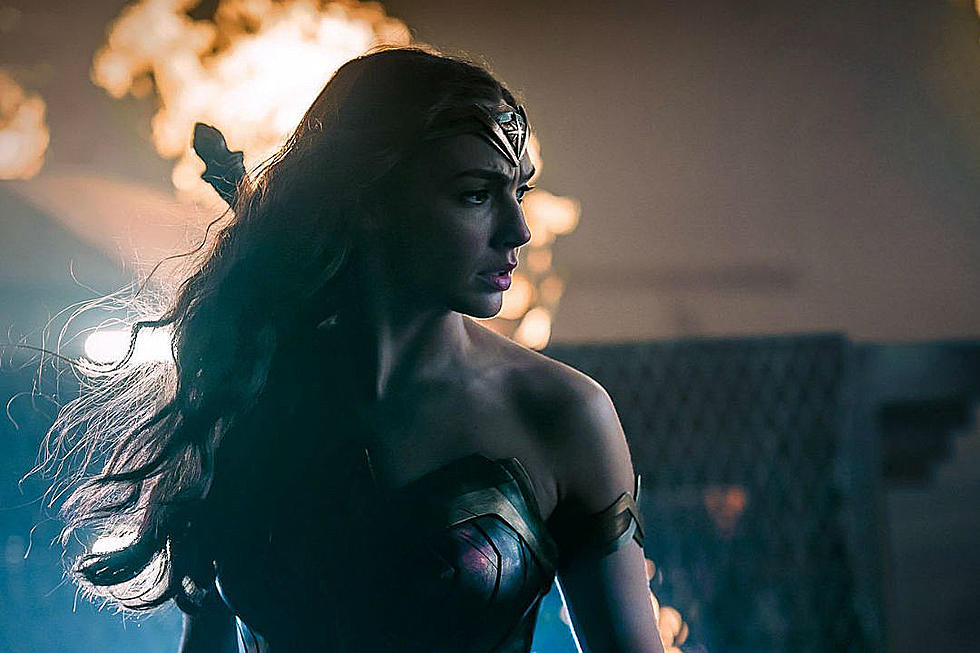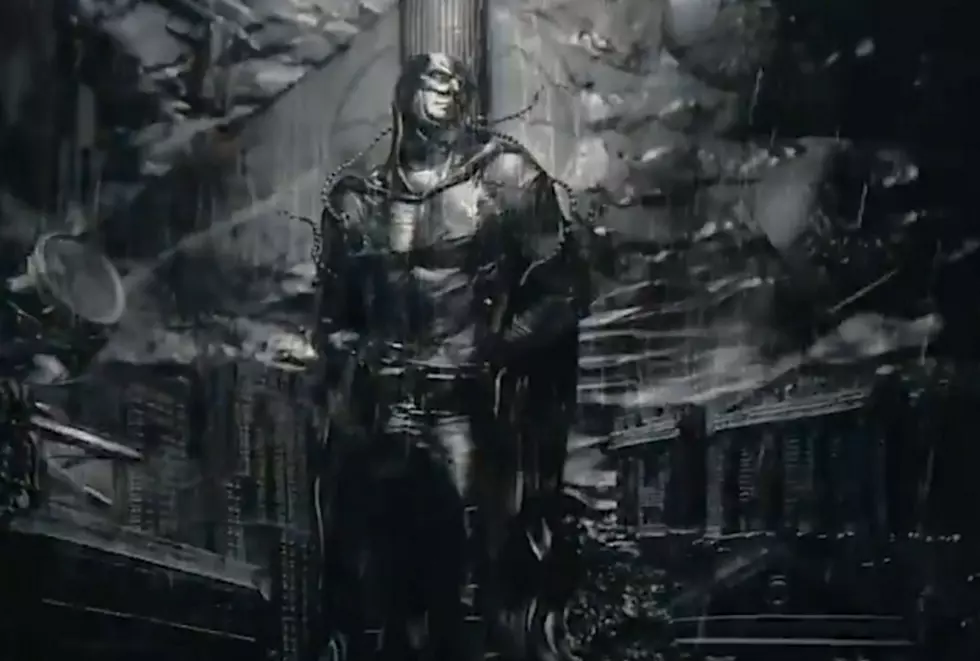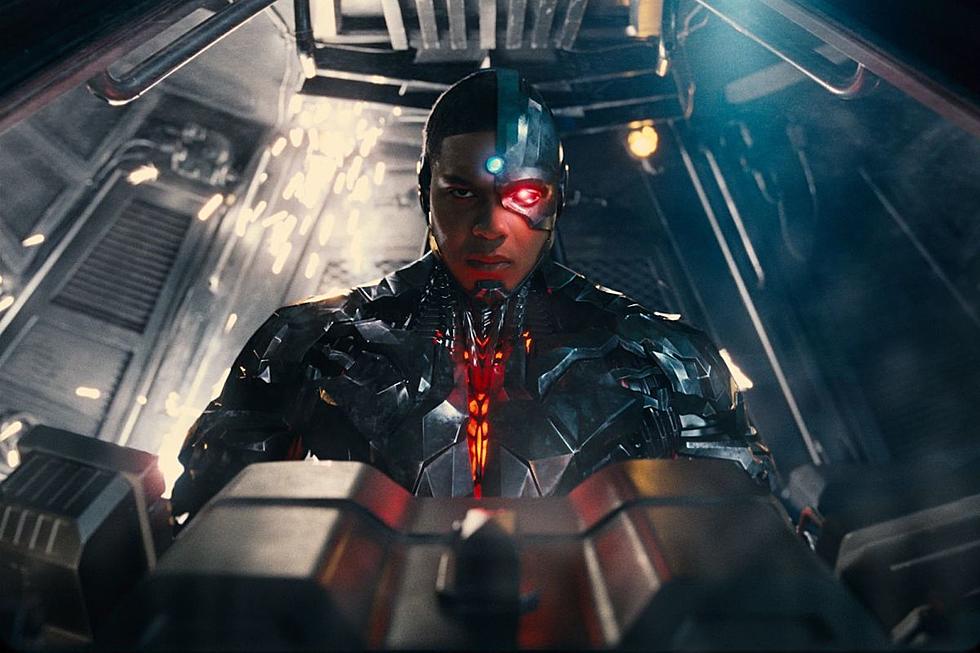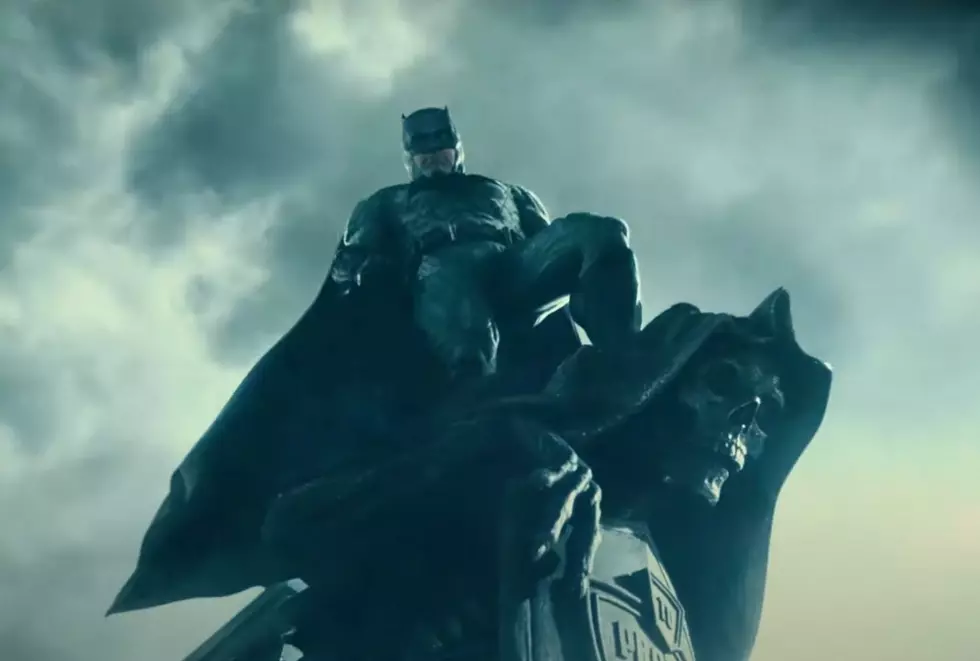
The Evolution of the Justice League: Best Justice League Stories by Decade
Many of comics’ most popular heroes have been around for decades, and in the case of the big names from the publisher now known as DC Comics, some have been around for a sizable chunk of a century. As these characters passed through the different historical eras known in comics as the Golden Age (the late 1930s through the early 1950s), the Silver Age (the mid 1950s through the late 1960s), the Bronze Age (the early 1970s through the mid 1980s) and on into modern times, they have experienced considerable changes in tone and portrayal that reflect the zeitgeist of the time.
With this feature we’ll help you navigate the very best stories of DC Comics’ most beloved characters decade by decade. This week, we’re taking a look at the best Justice League comics.
1960s: "A Place in the World"
All-Star Comics vol 1 #27, by Gardner Fox and Martin Naydel
Okay, so: the Justice League didn't exist in the 1940s. Their Golden Age predecessors were the Justice Society, the first superhero team in comics and, since the characters belonged to various publishing entities who had not yet consolidated into DC Comics, technically the first inter-company crossover. The Justice Society were the headliners of All-Star Comics and featured many of comics' most popular characters — as long as they didn't have their own solo feature elsewhere. Those who headlined their own books—e.g., Superman and Batman, and later Green Lantern and Flash — were relegated to being honorary members, or, in Wonder Woman's case, team secretary.
The selection here is notable for its fervent advocacy of the disabled, as the Justice Society teams up with six disabled young men who help the superheroes solve a series of mysteries. The story shows how the young men, despite their apparent handicaps, have valuable skills and knowledge that they can use to succeed in the workplace and contribute to society. The stories' message of the need of the disabled for jobs and societal acceptance is one that is still important seventy-five years later.
The Golden Age adventures of the Justice Society can be found in the All Star Comics Archives.
(I know there are a lot of JSA fans who are already mad that the JSA is only getting one decade in the spotlight here. But rest assured they will pop up again on this list, and, you know, maybe they'll get their own list later.)
Best of the rest: “The First Meeting of the Justice Society of America” (All-Star Comics vol 1 #3), “Five Hundred Years Into the Future With the Justice Society of America” (All-Star Comics vol 1 #10), “Shanghaied Into Space” (All-Star Comics vol 1 #13), “This Is Our Enemy” (All-Star Comics vol 1 #24), “The Man Who Knows Too Much” (All-Star Comics vol 1 #29)
1950s: “Starro the Conqueror”
Brave and the Bold vol 1 #28, by Gardner Fox and Mike Sekowsky
The Justice Society's popularity, as is the case with most superheroes, dwindled in the years after World War II, and their adventures in All-Star Comics ended in the early '50s. But after the successful revival of superheroes such as the Flash and Green Lantern, editor Julie Schwartz asked Justice Society veteran Gardner Fox to revive the team for the Silver Age (with a slight name change inspired by the popularity of baseball's National and American Leagues). Together with artist Mike Sekowsky, Schwartz and Fox put together seven of DC's most prominent heroes — Superman, Batman, Wonder Woman, Flash, Green Lantern, Aquaman, and Martian Manhunter — into one team, and a phenomenon was born.
With a cover date of March 1960, but with an actual street date of December 1959, “Starro the Conqueror” is literally the only Justice League story of the 1950s, and so wins by default; however, the story introduces all the elements of a Silver Age JLA story — including teen mascot Snapper Carr — and has been widely referenced and homaged in both subsequent comics stories and other media, such as Batman: The Brave and the Bold.
The adventures of the Justice League of America from the Silver and early Bronze Ages can be found in the Showcase Presents: Justice League of America series.
Best of the rest: No other Justice League stories from this decade exist!
1960s: “Crisis on Earth Three!”
Justice League of America vol 1 #29-30, by Gardner Fox and Mike Sekowsky
After successfully introducing the idea that the heroes of the Golden Age lived on an alternate Earth (designated Earth-2) in the pages of Flash, Gardner Fox took the opportunity to have the Golden Age Justice Society of Earth-2 team up with the then-modern Silver Age Justice League of Earth-1 on a series of cross-world adventures. This story would prove so popular that the Justice League and Justice Society would team up every year until 1985's Crisis on Infinite Earths brought an end to the concept of multiple Earths.
The selection here is the second of these cross-world team-ups, which includes not only Earth-1 and Earth-2, but introduces Earth-3, home of the Crime Syndicate of America, the Justice League's evil opposite, made up of criminal versions of Superman, Batman, Wonder Woman, Flash, and Green Lantern. If you've ever wondered what Batman would look like if he had an owl for a head, you are in luck.
Best of the rest: “Crisis on Earth One!” (Justice League of America vol 1 #21-22), “Snapper Carr—Super-Traitor!” (Justice League of America vol 1 #77), “The Origin of the Justice League” (Justice League of America vol 1 #9), “The Slave Ship of Space” (Justice League of America vol 1 #3), “Zatanna's Search” (The Atom vol 1 #19, Hawkman vol 1 #4, Green Lantern vol 2 #42, Detective Comics vol 1 #336 and 355, Justice League of America vol 1 #51)
1970s: “The Unknown Soldier of Victory”
Gardner Fox and Mike Sekowsky would be the creative team on Justice League of America until the end of the 1960s, when they would be followed by artist Dick Dillin and a series of young writers including Denny O'Neil, Len Wein, and Gerry Conway. The transition would be marked by the League's betrayal at the hands of their young sidekick Snapper Carr and their movement into a new orbiting satellite headquarters (consequently, this period is often referred to as the “Satellite Era”). There was also some shake-up to the team membership at this time that saw the departure of Wonder Woman and Martian Manhunter and the addition of such members as Black Canary, Elongated Man, and Red Tornado.
The selection here is another Justice League/Justice Society team-up, but this time with the added twist that these two teams alone aren't enough to face the danger at hand. They have to find the whereabouts of the legendary Seven Soldiers of Victory, who had sacrificed their existence in the world's memory to stop a cosmic menace years before. The result is a rousing adventure through time and space with more guest stars than you can shake a stick at.
Best of the rest: “Great Identity Crisis” (Justice League of America vol 1 #122), “The Long Way Home” (Justice League of America vol 1 #166-168), “Where on Earth Am I?” (Justice League of America vol 1 #123-124), “Earth's First and Last Super-Hero!” (Justice League of America vol 1 #153), “Crisis on Earth-X!” (Justice League of America vol 1 #107-108)
1980s: “A New Beginning”
Justice League #1-6, Justice League International #7, by Keith Giffen, JM DeMatteis, and Kevin Maguire
The early '80s saw the team move out of the satellite and into a bunker in Detroit, in a new incarnation led by Aquaman and featuring new teen heroes Gypsy, Vibe, and Steel. This team lasted until Crisis on Infinite Earths and its follow-up Legends, which sees this incarnation of the team disband.
The team reformed with a new version that focused on being a more international entity (to the point that the team was actually renamed Justice League International), in stories that focused more on character and (often, but not always) more light-hearted antics in addition to big action stories. This era is known for bringing in (at the time) lesser known heroes such as Blue Beetle, Booster Gold, Fire and Ice, and making them the new core of the Justice League. This take on the team would prove to be hugely successful and lead to various spin-offs over the next several years.
Anyway, the pick here is the first outing of this new team, and it features that famous scene where Batman punches out Guy Gardner.
Best of the rest: “Crisis on New Genesis” (Justice League of America vol 1 #183-185), “Secret of Genesis” (Justice League of America vol 1 #193), “Crisis in the Thunderbolt Dimension” (Justice League of America vol 1 #219-220), “Hunters and Prey” (Justice League of America vol 1 #251-254), “The End of the Justice League” (Justice League of America Annual #2)
1990s: “Rock of Ages”
JLA #10-15, by Grant Morrison and Howard Porter
By the mid-1990s, the Justice League had expanded into a number of teams and spin-offs, including Justice League Europe, Justice League Task Force, and Extreme Justice. Ultimately it was decided to streamline the team back into the “big seven” line-up that had not been the official team roster since the early '60s. After this team's debut in the Midsummer's Nightmare mini-series, Grant Morrison and Howard Porter would take the reins on the title for a series of epic adventures in a series now titled simply JLA.
“Rock of Ages” is possibly the biggest of these adventures, featuring a new Injustice Gang, the super-gods of Wonderworld, and time travel to a world where the JLA of the future has to stop a Darkseid who has uncovered the secrets of the anti-life equation.
The Morrison/Porter run on JLA can be found in the JLA: The Deluxe Edition series.
Best of the rest: “New World Order” (JLA #1-4), Kingdom Come #1-4, Justice League: The Nail #1-3, Justice League: A Midsummer's Nightmare #1-3, JLA: Year One #1-2, “Club JLI” (Justice League America #33-34), “Hell on Earth” (Justice League America #37-40), “What's Black and White and Black and White and Bl...” (Justice League Annual #4), “Destiny's Hand” (Justice League America #72-75), “Family Ties” (Justice League Europe #11-12), “The Extremist Vector” (Justice League Europe #15-19), “Too Much Time” (Justice League Europe Annual #2)
2000s: “Divided We Fall”
JLA #50-54, by Mark Waid and Bryan Hitch et al.
The “big seven” approach to the team was a big success, with the team founders being the core of the League (with various expansions and streamlinings) for 125 issues. After the events of the universe-wide storyline Infinite Crisis, the Justice League was retooled a number of times into various incarnations based on some perhaps questionable editorial decisions that ultimately don't matter because the whole DC universe was rebooted in 2011 with a modified version of the classic “big seven” lineup.
The front half of the decade of the 2000s is so heavily loaded with good stories that you could argue (and if I know CA commenters, you will) that any number of stories was actually the best of the decade. That's fine; that's why there's an honorable mention section. I went with “Divided We Fall,” because it's the best of Mark Waid's all too brief run (yeah, better than “Tower of Babel”) featuring art from Bryan Hitch at the top of his game, in a story with a great premise: the JLA find themselves separated from their own alter egos, and Plastic Man has to overcome the criminal tendencies of his own past in order to bring everyone back together. A fascinating examination of what happens when you take the “man” out of “Superman.”
The entire Waid/Hitch run can be found in JLA vol 5.
Best of the rest: JLA/Avengers #1-4, JLA: Earth 2, “Tower of Babel” (JLA #43-46), “World War III” (JLA #36-41), JLA Classified #1-3, Formerly Known as the Justice League #1-6, DC: The New Frontier #1-6, Final Crisis #1-7, JLA/Hitman #1-2, “Local Hero” (Justice League Adventures #13), Justice #1-12, JLA: Liberty and Justice
And that's it for the decades we've experienced so far! The 2010s are halfway over; we'll have to see who comes out on top in five years! Gotta say, this upcoming run on Justice League United is looking like a real contender!
More From ComicsAlliance









